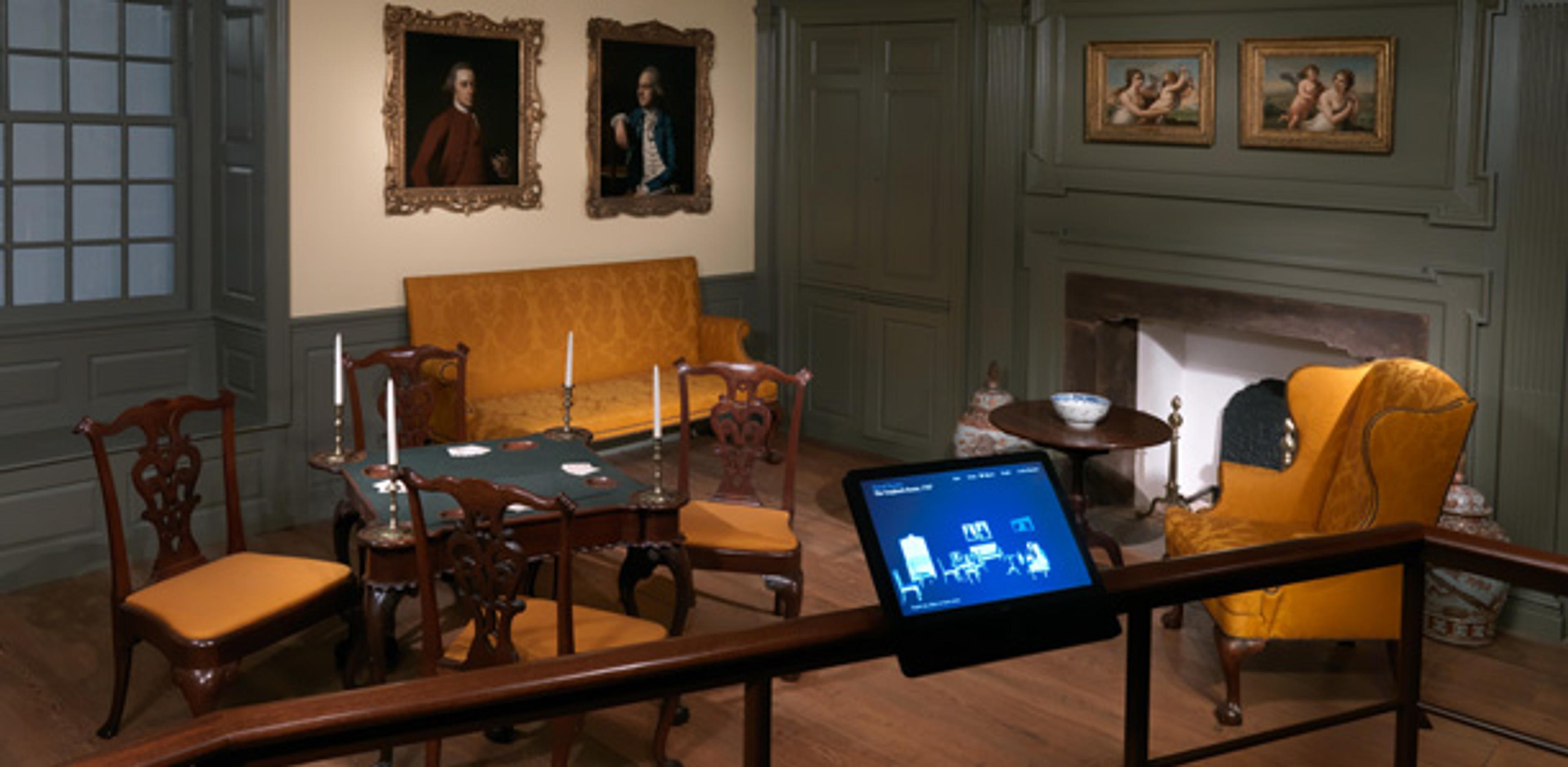Verplanck Room, 1767 (Coldenham, New York)
«Last May, when the seventeenth-, eighteenth-, and early nineteenth-century period rooms in the "old" American Wing building (1924) reopened after several years of renovation, visitors noticed many changes. Some were huge—we had removed several rooms and moved or replaced others—while some were more subtle, like the new lighting.» Still others, like the new air handling, electrical wiring, and fire suppression systems, were nearly invisible to the public. But one major change couldn't be ignored: There were computers in the period rooms! The touch-screen monitors, mounted on the rooms' barriers or in the walls of an adjoining space, are the product of many years of work by a large group of talented and creative people, all with various specialties. The team included curators, researchers, educators, editors, software designers, computer hardware and wiring specialists, all working in concert to produce a new way of communicating information to the public.
In the past, most of our labels were printed on large rectangles of paper, backed with a board and affixed to the room barrier. (This type of label can still be seen in our later nineteenth-century rooms, which are installed in an area of the American Wing that has not yet been wired for electronics.) Because of their relatively small size, the old labels limited the amount of information we could relay about a room. They were also often hard to read, both due to small type size (we curators wanted to get in as much information as possible!) and low lighting. In many of the rooms, the only source of light—on the ceiling above and behind the viewer—was blocked by the shadow of that viewer leaning over to read a label.
As the period room curator in the American Wing for many years, I had long been frustrated by the fact that a small, paper label couldn't possibly accommodate the many stories that each room has to tell: the unique history and architectural relevance, the interesting family associations, and the information about each object within the room. As a curator and educator, I also know it is very important to explain how each room came to the Museum and which of its aspects are documented fact versus educated conjecture.
How could we convey all this information? A computer screen seemed like a natural choice. It could accommodate as much as we wanted to say about the room, and make that information easily accessible. Touch-screen technology has become generally recognized and accepted, but would a computer be too intrusive and break the spell of the room's ability to transport the viewer back in time, which is, after all, the magic of our rooms?
My colleagues and I carefully assessed this idea of mixing the past and the present. We struggled with issues of monitor size and number of monitors per room. We initially planned to put two small computers in each room, but concluded that two would be overkill in many of our very intimately scaled rooms and decided instead to use one larger screen. We were concerned about the brightness of the screen in the evocative, dimly lit interiors, and made sure that the background of the screen was a quiet, dark blue. We chose not to have any sound component so there wouldn’t be any distracting noise within the room, or a cacophony of competing soundtracks from multiple rooms. We also added small, traditional signs in each room stating the room’s name, original location, and date in case there are visitors who choose not to use the screens, or, by some fluke, a computer wasn’t working. Luckily, our screens have proved to be very robust over the last year.
Visitors to the newly installed period rooms have almost universally applauded the touch-screen labels, both for the additional information they provide and for how easy they are to use. Based on our continuous efforts to improve the experience further, we are contemplating adding second monitors in some of our larger rooms, and, eventually, we plan to migrate the content from the touch screens to www.metmuseum.org so that visitors can view the information before and after their trip to the Museum. In the meantime, we hope that everyone will visit the newly refurbished American Wing rooms and try the touch screens in person. And stay tuned for more new computers with information about the entire American Wing collection, which will be available to the public in 2012 in the Luce Study Center.
Amelia Peck is the Marica F. Vilcek Curator of American Decorative Arts and Manager of the Henry R. Luce Center for the Study of American Art.
Related Links
Overview of The New American Wing
The American Wing
